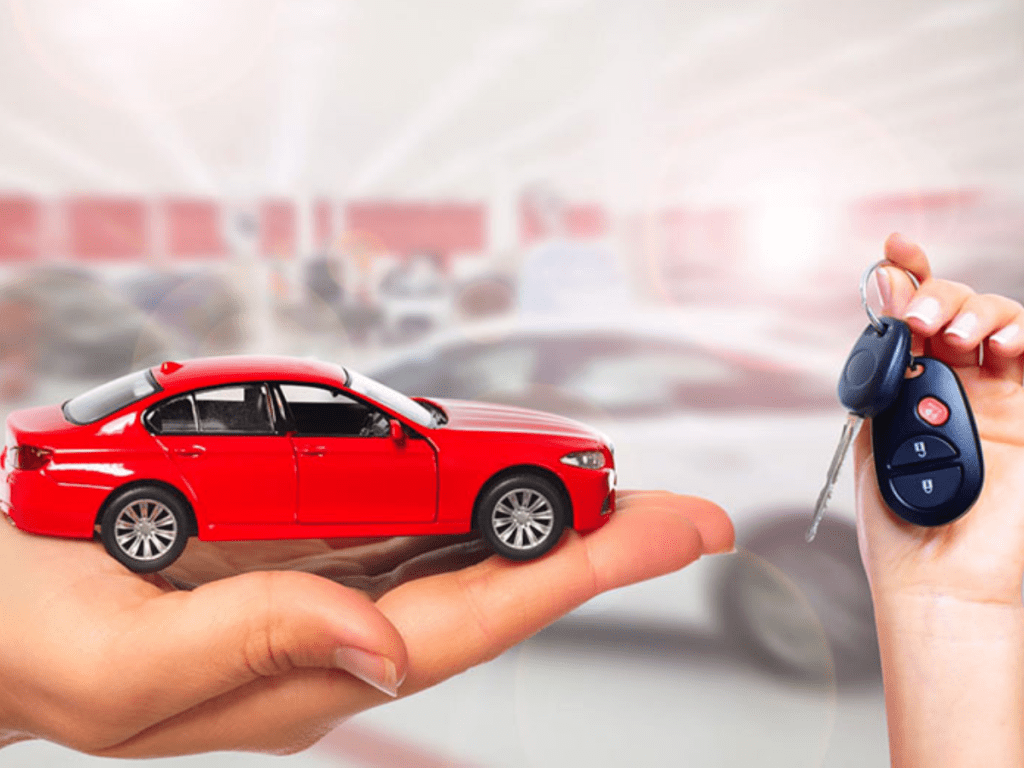Introduction
When it comes to financing a car, one of the most important decisions you’ll make is choosing between a fixed interest rate and a floating (or variable) interest rate. Both options come with their unique advantages and risks, and the choice you make could significantly impact how much you end up paying over the life of your loan. Understanding the differences, benefits, and long-term implications of each option is crucial for making a financially sound decision.
Understanding Fixed Interest Rates on Car Loans
A fixed interest rate on a car loan means that the interest rate remains constant throughout the entire loan tenure. Whether the loan is for three years or seven years, your monthly installment (also known as EMI or equated monthly installment) remains the same.
The most significant advantage of a fixed interest rate is predictability. You know exactly how much you’ll pay each month, which makes budgeting easier. Fixed rates protect you from market fluctuations and rising interest rates. If you lock in a low rate, you’re safeguarded against any increases that may happen during the loan period.
However, fixed rates are often slightly higher than the starting rates of floating interest loans. Lenders factor in the risk of future interest rate hikes and adjust fixed rates accordingly to protect themselves from long-term market changes.
Understanding Floating Interest Rates on Car Loans
Floating interest rates, also called variable rates, change periodically based on the lender’s benchmark or the prevailing market interest rates. These are usually tied to an external reference rate, such as the central bank’s lending rate or the lender’s own base rate.
The biggest advantage of floating rates is that they are typically lower at the beginning compared to fixed rates. Borrowers are often attracted to the lower initial EMIs, making this option appealing for those who want short-term affordability.
However, floating rates come with uncertainty. If market interest rates rise, your loan rate will also increase, causing your monthly payments to go up. Conversely, if rates drop, you benefit by paying less interest over time.
Pros and Cons of Fixed Interest Rates
Advantages of Fixed Rates:
- Predictability: Your EMI will remain constant, making financial planning straightforward.
- Protection from Rate Hikes: You’re shielded from any future increases in interest rates.
- Peace of Mind: Knowing that your repayments won’t change provides emotional comfort, especially for risk-averse borrowers.
Disadvantages of Fixed Rates:
- Higher Starting Rate: Lenders charge a premium for providing certainty, so you usually start with a higher rate than floating rate loans.
- No Benefit from Rate Drops: If the market rates decrease, you’re stuck with your higher agreed-upon rate.
- Prepayment Penalties: Some fixed-rate loans come with charges if you choose to pay off the loan early.
Pros and Cons of Floating Interest Rates
Advantages of Floating Rates:
- Lower Initial Rate: The starting rate is generally lower than fixed rates.
- Potential Savings if Rates Fall: If market interest rates decrease, your EMI could reduce, saving you money over time.
- Flexibility: Some floating rate loans have more lenient prepayment and foreclosure terms.
Disadvantages of Floating Rates:
- Uncertainty: Monthly payments can fluctuate, making budgeting difficult.
- Risk of Rate Hikes: If interest rates rise, your EMI could increase significantly.
- Stress Factor: For people with tight budgets, unpredictable monthly obligations can be stressful.
Long-Term Cost Comparison: Fixed vs. Floating Rates
To decide which loan type will save you more money over time, it’s important to look at different economic scenarios.
Scenario 1: Stable or Decreasing Interest Rate Environment
In this situation, floating rate loans become more cost-effective. Since the rates either remain the same or fall, your overall interest outgo stays low or reduces further. Borrowers in this scenario can take advantage of lower EMIs and total interest paid over the loan tenure.
Scenario 2: Increasing Interest Rate Environment
If rates are expected to climb, a fixed-rate loan can save you money. Even though the starting rate might be higher, you’re protected from multiple rate hikes during the tenure. This could result in substantial savings compared to a floating rate that keeps adjusting upward.
Scenario 3: Highly Volatile Interest Rate Environment
If the market is unpredictable and rates fluctuate often, the decision becomes more nuanced. In such cases, risk appetite plays a big role. Fixed-rate borrowers enjoy stability, while floating-rate borrowers might gamble on rate drops but risk paying more if rates rise.
Factors to Consider Before Choosing Between Fixed and Floating Rates
Choosing the right loan type isn’t just about interest rates. Several other factors should influence your decision.
1. Loan Tenure:
For short-term loans (up to 3 years), the difference in total interest paid between fixed and floating rates may not be significant. For long-term loans (5 years and above), rate changes over time can have a larger impact.
2. Market Trends and Economic Forecast:
Stay updated with central bank policies, inflation trends, and economic outlooks. If experts predict rising interest rates, fixed-rate loans become safer. Conversely, if rates are expected to drop, floating loans can help you save.
3. Personal Risk Tolerance:
Are you comfortable with fluctuating monthly payments? If you prefer financial predictability, fixed rates are better. If you’re okay with risk in hopes of saving money, floating rates might suit you.
4. Income Stability:
If your income is stable and sufficient to absorb potential EMI increases, floating rates are manageable. However, if your budget is tight and fixed, opt for the security of a fixed rate.
5. Prepayment Plans:
If you plan to prepay or foreclose your loan early, check the penalty clauses. Fixed-rate loans often carry higher foreclosure charges compared to floating rate loans.
6. Initial Interest Rate Difference:
Calculate how much more you’ll pay monthly with a fixed rate compared to a floating rate. Even a small monthly difference can add up over the loan term.
Real-Life Example of Fixed vs. Floating Car Loan Costs
Suppose you’re taking a car loan of $20,000 for 5 years.
Fixed Rate Scenario:
Interest Rate: 8% per annum
Monthly EMI: Approximately $405
Total Interest Paid Over 5 Years: Around $4,300
Floating Rate Scenario:
Starting Rate: 6.5% per annum (but subject to change)
Initial Monthly EMI: Approximately $390
If the floating rate remains the same, your total interest paid would be around $3,400, saving you about $900 over 5 years compared to the fixed rate.
However, if interest rates rise by even 1.5% during the loan term (bringing the floating rate close to 8%), your EMI will increase, and total interest paid could end up matching or exceeding the fixed-rate loan.
Psychological Factors: Peace of Mind vs. Taking a Chance
Beyond just numbers, psychological comfort plays a big role in loan decisions.
Borrowers with low risk tolerance often prefer fixed rates because they eliminate uncertainty. Fixed rates offer peace of mind, which is invaluable for people with tight household budgets.
On the other hand, borrowers who are financially flexible and like to take calculated risks might lean towards floating rates in hopes of saving money.
It’s important to evaluate your emotional comfort alongside financial calculations before deciding.
When Fixed Interest Rates Make More Sense
Choose a fixed interest rate loan if:
- You expect interest rates to rise soon.
- You want stability and peace of mind.
- Your monthly budget cannot handle any unexpected increase in EMIs.
- You are borrowing for a longer duration and want to lock in current rates.
When Floating Interest Rates Are the Better Choice
Opt for a floating interest rate loan if:
- You believe market rates will stay stable or decline.
- You’re comfortable with the risk of rate fluctuations.
- You want to take advantage of lower initial EMIs.
- You have flexibility in your budget to absorb future rate hikes.
- You’re planning to repay the loan quickly (short tenure reduces risk of long-term rate hikes).
Hybrid Car Loans: Best of Both Worlds?
Some lenders offer hybrid car loan products where the interest rate is fixed for an initial period (say 2 years) and then switches to floating for the remaining tenure.
This gives you short-term EMI certainty while still allowing for future benefits if rates drop. However, these loans are less common and come with their own set of terms and conditions.
Tips Before Signing the Loan Agreement
- Read the Fine Print: Always check for hidden charges, especially processing fees, prepayment penalties, and foreclosure charges.
- Compare Lenders: Interest rates, fees, and customer service levels vary across banks and non-banking financial companies. Don’t just settle for the first offer.
- Negotiate: Many lenders allow some room for negotiation, especially if you have a good credit score.
- Understand the Reset Frequency: For floating rates, ask how frequently the rate resets (quarterly, semi-annually, annually).
- Factor in Total Cost of Ownership: Remember, interest isn’t the only cost. Consider insurance, maintenance, taxes, and registration fees while budgeting.
Conclusion: Which Option Will Save You More Over Time?
There is no universal answer. The best choice between fixed and floating interest rates for your car loan depends on your personal financial situation, market conditions, and risk appetite.
If interest rates are low and expected to stay low or fall, floating rates can help you save money. But if rates are likely to rise, or if you value financial stability and predictability, a fixed-rate loan is the safer and often smarter choice.
Ultimately, the key is to carefully assess your needs, understand market trends, and do a cost comparison using real numbers before making your decision. Consult with a trusted financial advisor if needed, and always read the loan agreement thoroughly before signing.
Both fixed and floating rate loans come with trade-offs. Making an informed, well-reasoned choice will help you enjoy your new car without unnecessary financial stress in the future.

